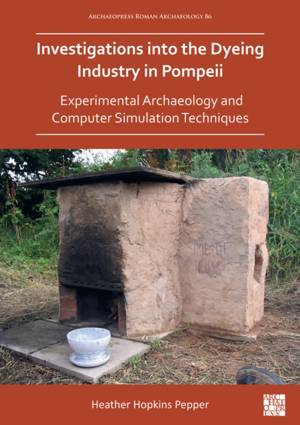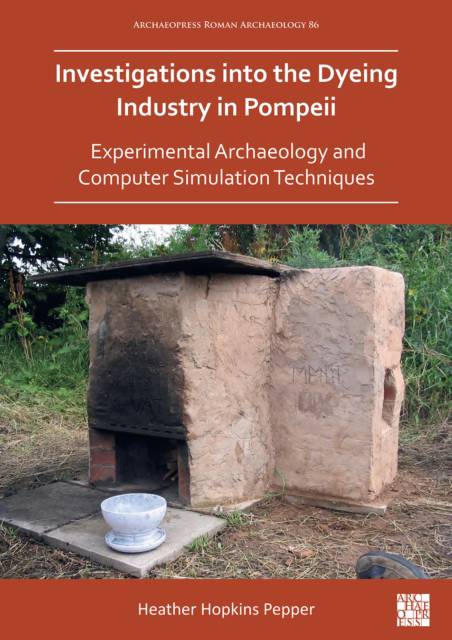
- Afhalen na 1 uur in een winkel met voorraad
- Gratis thuislevering in België vanaf € 30
- Ruim aanbod met 7 miljoen producten
- Afhalen na 1 uur in een winkel met voorraad
- Gratis thuislevering in België vanaf € 30
- Ruim aanbod met 7 miljoen producten
Zoeken
Investigations Into the Dyeing Industry in Pompeii
Experimental Archaeology and Computer Simulation Techniques
Heather Hopkins Pepper
€ 51,45
+ 102 punten
Omschrijving
The scale of processing associated with the dyeing industry in Pompeii is a controversial subject. To determine the scale of manufacturing would allow an understanding of the operation of Pompeii's economy and its part in the Roman World. Previous studies have taken a theoretical approach, and no conclusive answer has been reached. Conversely, Investigations into the Dyeing Industry in Pompeii uses a new multi-disciplinary triangulated approach. A replica was constructed to gauge the operating parameters of a dyeing apparatus within the framework of the principles of experimental archaeology. The remains were re-examined in situ with the new operational and ergonomics understanding. The replica was amended to allow exploration of design features and ventilation. The throughput of the apparatus was placed within the context of the industry with modern manufacturing systems theory. Computer simulation was used to explore the long-term mechanical effects of the dyeing process on the materials used in the construction of the original apparatus and to determine if 'ratcheting' failure was due to creep. These combined methods have given an understanding of the significance of the industry that is grounded in engineering and archaeological principles but within the context of Pompeii.
Specificaties
Betrokkenen
- Auteur(s):
- Uitgeverij:
Inhoud
- Aantal bladzijden:
- 212
- Taal:
- Engels
- Reeks:
Eigenschappen
- Productcode (EAN):
- 9781789697421
- Verschijningsdatum:
- 3/03/2022
- Uitvoering:
- Paperback
- Formaat:
- Trade paperback (VS)
- Afmetingen:
- 203 mm x 290 mm
- Gewicht:
- 774 g

Alleen bij Standaard Boekhandel
+ 102 punten op je klantenkaart van Standaard Boekhandel
Beoordelingen
We publiceren alleen reviews die voldoen aan de voorwaarden voor reviews. Bekijk onze voorwaarden voor reviews.











